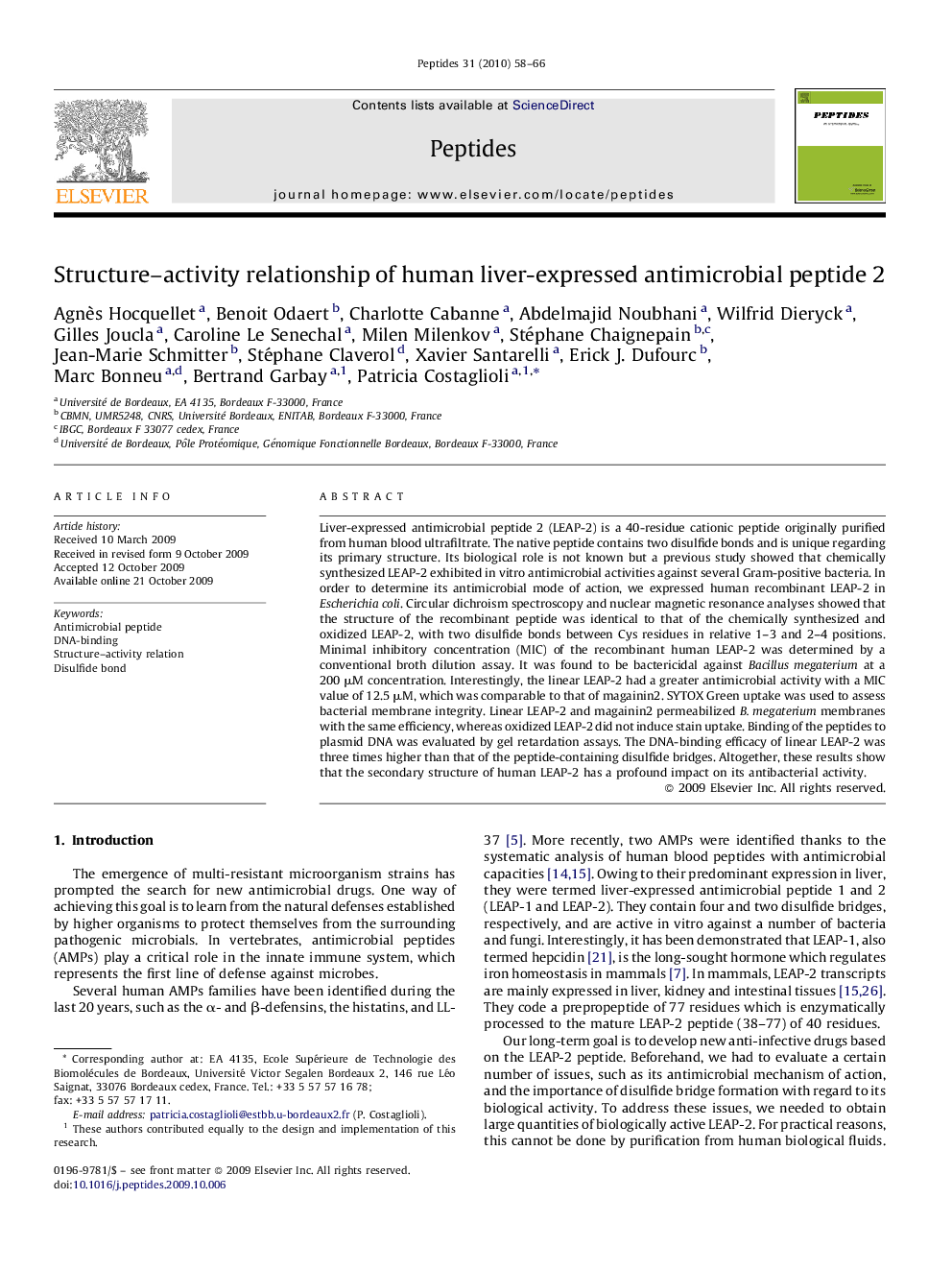| Article ID | Journal | Published Year | Pages | File Type |
|---|---|---|---|---|
| 10836003 | Peptides | 2010 | 9 Pages |
Abstract
Liver-expressed antimicrobial peptide 2 (LEAP-2) is a 40-residue cationic peptide originally purified from human blood ultrafiltrate. The native peptide contains two disulfide bonds and is unique regarding its primary structure. Its biological role is not known but a previous study showed that chemically synthesized LEAP-2 exhibited in vitro antimicrobial activities against several Gram-positive bacteria. In order to determine its antimicrobial mode of action, we expressed human recombinant LEAP-2 in Escherichia coli. Circular dichroism spectroscopy and nuclear magnetic resonance analyses showed that the structure of the recombinant peptide was identical to that of the chemically synthesized and oxidized LEAP-2, with two disulfide bonds between Cys residues in relative 1-3 and 2-4 positions. Minimal inhibitory concentration (MIC) of the recombinant human LEAP-2 was determined by a conventional broth dilution assay. It was found to be bactericidal against Bacillus megaterium at a 200 μM concentration. Interestingly, the linear LEAP-2 had a greater antimicrobial activity with a MIC value of 12.5 μM, which was comparable to that of magainin2. SYTOX Green uptake was used to assess bacterial membrane integrity. Linear LEAP-2 and magainin2 permeabilized B. megaterium membranes with the same efficiency, whereas oxidized LEAP-2 did not induce stain uptake. Binding of the peptides to plasmid DNA was evaluated by gel retardation assays. The DNA-binding efficacy of linear LEAP-2 was three times higher than that of the peptide-containing disulfide bridges. Altogether, these results show that the secondary structure of human LEAP-2 has a profound impact on its antibacterial activity.
Related Topics
Life Sciences
Biochemistry, Genetics and Molecular Biology
Biochemistry
Authors
Agnès Hocquellet, Benoit Odaert, Charlotte Cabanne, Abdelmajid Noubhani, Wilfrid Dieryck, Gilles Joucla, Caroline Le Senechal, Milen Milenkov, Stéphane Chaignepain, Jean-Marie Schmitter, Stéphane Claverol, Xavier Santarelli, Erick J. Dufourc,
